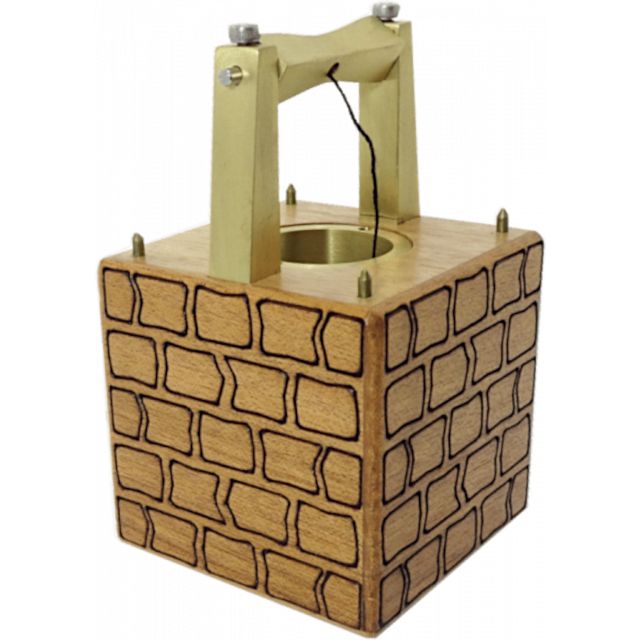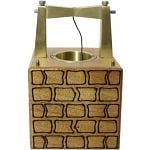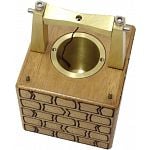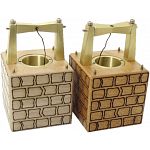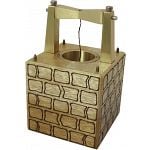Abraham's Well - Sequential Discovery Puzzle
- Object
- Find the uniquely Australian token.
- Difficulty
- Level 10 - Mind Boggling
- Brand
- Mr. Puzzle
- Dimensions
- 6.4 cm x 6.4 cm x 10.5 cm / 2.5 in x 2.5 in x 4.1 in
- Packaging
- Cardboard Box
A difficult sequential discovery puzzle by Brian Young.
This puzzle has been a long time in the making. Brian had a concept for the major step in the puzzle way back in 2018 and began designing the puzzle around that. Perhaps the most difficult part of the design is to know when to stop adding things to the puzzle. After almost 3 years in the design process it was time to get on with making it. It hasn’t quite been ‘ages’ yet (pun fully intended!) but getting real close.
Abraham’s Well has many separate steps to solve with a level of complexity comparable or surpassing previous multi-step sequential discovery puzzles like the Plugged Well or the Opening Bat. There is definitely a lot of puzzling in a very compact space. The puzzle can be separated into are 23 individual parts. There are another 21 parts that are glued into the body and never actually come out of the puzzle.
A huge part of the puzzling is to work out which of these 23 parts are tools, and which are not. The tools are very well hidden.
No bashing, no external tools, and no brute strength are needed to solve Abraham’s Well. You don’t even need to tap anything. There’s a tool for every step of the puzzle, you just have to find it.
With so many levels how will you know when you’re finished?
The ultimate goal is to find the uniquely Australian token Brian has placed inside the puzzle. There can be no mistaking once you’ve found it. Although it might take a bit of googling to understand, this small pewter object represents a link between Australia and Abraham’s Well. Clue: ANZAC 1917
Abraham’s Well is made from Queensland Maple wood (with some Silky Oak and Jarrah inside. Silky Oak is particularly used inside because it’s very stable). You’ll see from the photos the colour of this wood can vary quite a lot from a light pink to almost rust-brown and every shade in between. Some puzzles even have the colour graduation on the same body.
There are magnets (of course!) and lots of brass pieces, some stainless steel pins & hex head nuts and allen keys.
